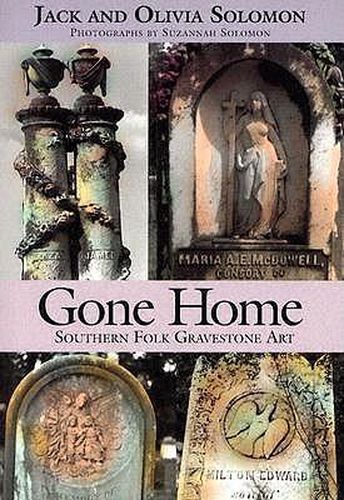Readings Newsletter
Become a Readings Member to make your shopping experience even easier.
Sign in or sign up for free!
You’re not far away from qualifying for FREE standard shipping within Australia
You’ve qualified for FREE standard shipping within Australia
The cart is loading…






Four decades ago, folklorists Jack and Olivia Solomon began documenting Southern cemeteries, recording the names, lives, and epitaphs of thousands of the deceased. The volume they now share with us is not a Book of the Dead, but a Book of Life. The Solomons reveal here their love and respect for the
final resting places
of this world. In these pages are recorded the sorrow for a lost child, the anger over the murder of a brother, the strengths of an admired civic leader, the life of a beloved preacher, the character of a stalwart soldier, as well as the grief for a mother, a father, a son, a daughter, a wife, a husband. Many of these epitaphs console and give promise of a
better home over yonder.
Others remind one of the shortness of life and the surety of death. As in life, there is wit-the humor of a wife who reminds her spouse,
I told you I was sick! -and profundity-the laconic remark,
She hath done what she could.
The book also discusses historical precedents for Alabama epitaphs, different types of epitaphs, gravestone writings as folk literature, gravestones as architecture/sculpture, and the lettering of epitaphs.
$9.00 standard shipping within Australia
FREE standard shipping within Australia for orders over $100.00
Express & International shipping calculated at checkout
Four decades ago, folklorists Jack and Olivia Solomon began documenting Southern cemeteries, recording the names, lives, and epitaphs of thousands of the deceased. The volume they now share with us is not a Book of the Dead, but a Book of Life. The Solomons reveal here their love and respect for the
final resting places
of this world. In these pages are recorded the sorrow for a lost child, the anger over the murder of a brother, the strengths of an admired civic leader, the life of a beloved preacher, the character of a stalwart soldier, as well as the grief for a mother, a father, a son, a daughter, a wife, a husband. Many of these epitaphs console and give promise of a
better home over yonder.
Others remind one of the shortness of life and the surety of death. As in life, there is wit-the humor of a wife who reminds her spouse,
I told you I was sick! -and profundity-the laconic remark,
She hath done what she could.
The book also discusses historical precedents for Alabama epitaphs, different types of epitaphs, gravestone writings as folk literature, gravestones as architecture/sculpture, and the lettering of epitaphs.